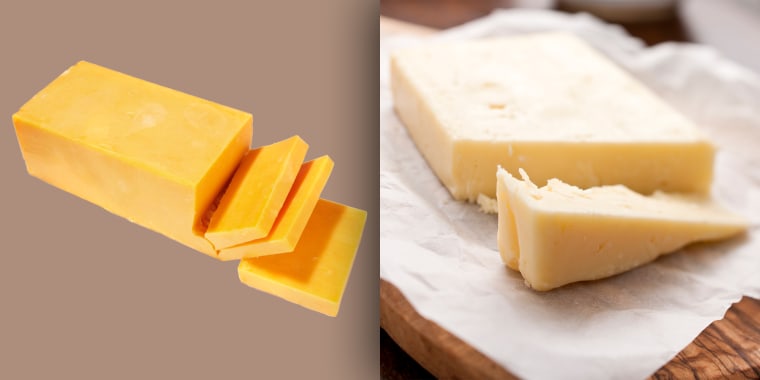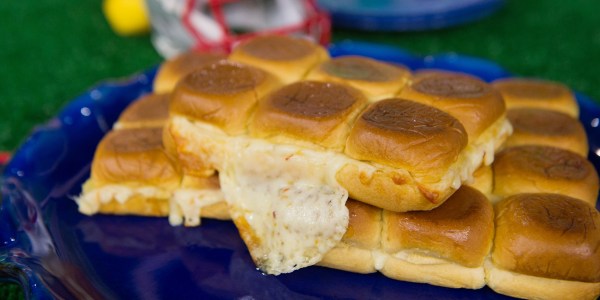Many people claim they have a preference for white or yellow cheese when it comes to cheddar or American. But have you ever stopped to think about why they're two different colors?
The cows certainly aren't yellow, and the cheeses seem to taste equally as sharp no matter what hue they happen to be. So what's the science behind this duality in the deli case?
To brush up on our knowledge of cheese, TODAY Food reached out to Zoey Sachs, educational director at Bedford Cheese Shop in New York City, to find out why is cheddar usually available in two different hues.
It turns out, the difference is all about some dye.
"Some (cheese producers) rub annatto seeds on the cheese," Sachs told TODAY. Since milk from different cows can vary slightly in color, some dairies dye their cheese to ensure a more uniformly colored end product.
If you think one type of cheese simply tastes better, that's likely just your mind playing games, according to Sachs. "As far as I'm concerned, it doesn't add any flavor," she said.
Anatto, according to the Wisconsin Center for Dairy Research, is one of the oldest dyes known to humans. Originally used by the Aztecs for a variety of things including body paint, annatto is an extract from a shrub called achiote and it's grown in Bolivia, Brazil, Columbia, Dominican Republic, Ecuador, Guyana, India, the Philippines, Jamaica, Mexico, Peru, Kenya and Surinam.
Today, it is sourced primarily from South America.
Annatto started being used widely in the dairy industry about 150 years ago to give certain cheeses a more desirable look, especially when they needed to be transported and preserved for longer periods of time. White cheese tends to show imperfections more readily and as consumers got more used to yellow-orange cheese, it became an expected option.
Today, many cheddars are yellow. While most cheesemakers use annatto, some use an artificial coloring agent instead, according to Sachs. The best way to know exactly what you're eating is to check the nutrition label. Some producers, like Kraft, also add paprika, which imparts a deeper yellow color.
But is one color of cheese better than the other?
Since annatto is a natural additive that doesn't affect the flavor, the choice is really up to one's personal preference. Choosing the best quality cheese, Sachs said, doesn't have to do with the color, but rather where it was produced, how long it was aged and where the customer buys it from.
How cheese is packaged affects the flavor more than its color.
"At supermarkets, a lot of cheddars and cheeses are wrapped in plastic, which actually suffocates (them) and takes away from the flavor," Sachs told TODAY.
To get the best tasting cheese, Sachs recommended buying it from the glass case at any market or grocery store, rather than picking up the pre-cut stuff from the dairy aisle. The cheeses that sit in the case, open and unwrapped, are usually of a better quality. At home, wrapping the cheese in paper or a cloth will also keep it tastier longer.
If you're used to pre-packaged cheeses (as many of us are), it's totally fine to skip the sharp stuff in favor of a milder and creamier product.




